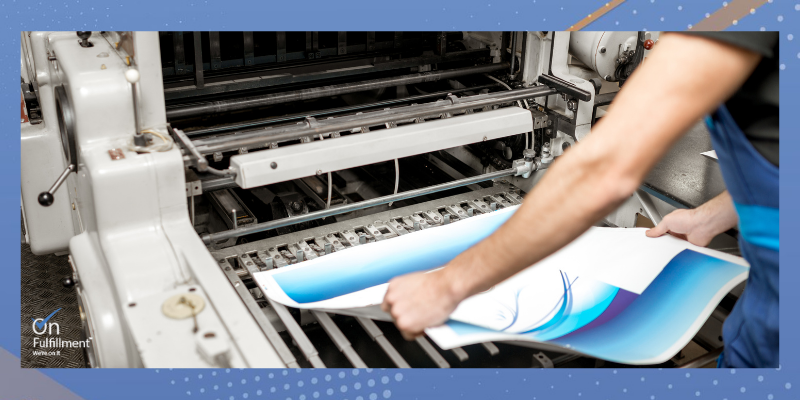Getting your electronic file ready to send to a commercial printer is a matter of “dotting i’s and crossing t’s,” as it were. You have to be careful and take certain steps to ensure that the file is print ready. If you don’t, you’ll delay production – and you might end up compromising the print quality of your job.

Here’s a list of the most common file issues with jobs sent to commercial printers:
1. Bleeds
When your printed piece includes an inked image, text, or photo that runs right to the edge of the paper, that’s known as a “bleed” in printing lingo, as the ink “bleeds” off the edge. When preparing files for commercial printers, you need to plan for bleeds in whatever software you’re using. In some programs, you can set up a bleed automatically. A good rule of thumb is 1/8” beyond your crop/trim for bleed allowance. Remember, if you include crop marks on your file, do not place them within this 1/8” bleed area.
2. RGB to CMYK
Make sure you convert your file from RGB to CMYK if it’s going to an offset printer. RGB is for Red-Green-Blue. CMYK stands for the 4 process colors of Cyan, Magenta, Yellow, and blacK. If you don’t do this conversion, the printer will (has to, actually). But it’s safer if you do it, or else there could be a color shift.
Remember to delete any unused colors from your file before finalizing it for the printer. (The same goes for extra fonts and images.)
3. Image Resolution
Be mindful of the resolution of the images in your job file. While computer monitors generally display images at 72-96 dpi (dots per inch), this is too low for commercially printed jobs and would affect the visual sharpness of your images. Most printed jobs require images at a minimum of 300 dpi. And because an image’s resolution increases when it’s scaled down and decreases when it’s enlarged, you should base each image’s resolution on its final size in your printed piece.
PS: The quality of an image scanned at a low resolution will not improve even if you change the resolution to 300 dpi.
4. Fonts
Send all fonts used in your job to your printer. You can embed all fonts and links from Quark or InDesign. Make sure the entire font family is included – as in Garamond, Garamond Bold and Garamond Italic – not just Garamond. Let the printer know what type of fonts you’ve used, as well: TrueType, OpenType or PostScript.*
Alternatively, select “all” on each spread and convert type to outline or paths. This essentially converts the fonts in the file to paths / art. Therefore, you don’t need to embed or send along fonts. This is especially helpful with oddball fonts that won’t let you embed them. It’s also an extra precaution to having copy rerun itself.
*According to the Adobe web site, TrueType is a standard for digital fonts and was developed by Apple Computer. It was subsequently licensed to Microsoft. OpenType is a newer digital type standard developed jointly by Apple and Microsoft. Postscript by Adobe is the leading standard for printing and imaging. PostScript fonts are high quality and extremely detailed.
5. Laser Proofs
Please send a laser proof to your printer with your job file whenever possible. It’s important that the printer has one in hand so it’s totally clear what your job should look like. This is especially important for multipage jobs that fold.
If you carefully follow these basic guidelines, your file should be in good shape for your printer. Of course, should you or your designer have any questions, it’s best to consult your printer before sending the file. If you have any questions about how to ensure your file is print ready, please don't hesitate to contact us.
Image in this blog post courtesy of Idea go / FreeDigitalPhotos.net

